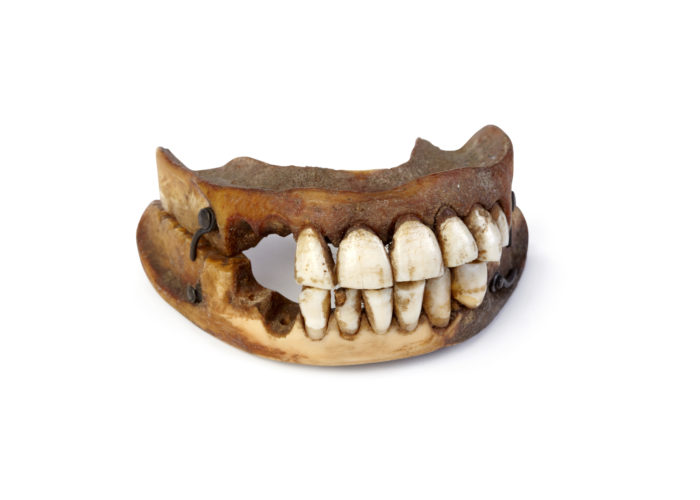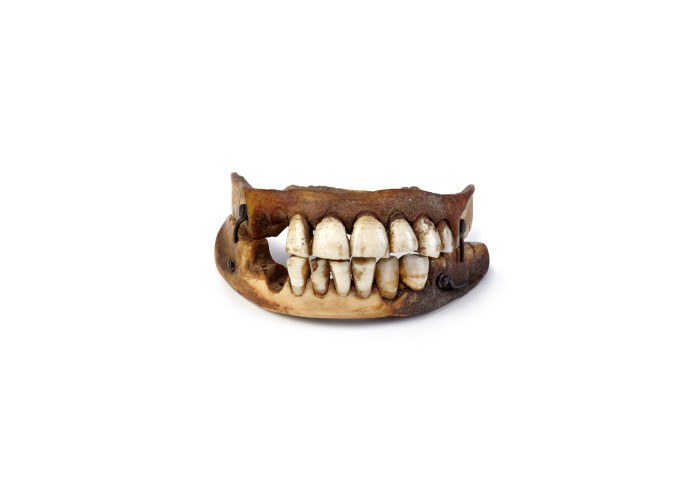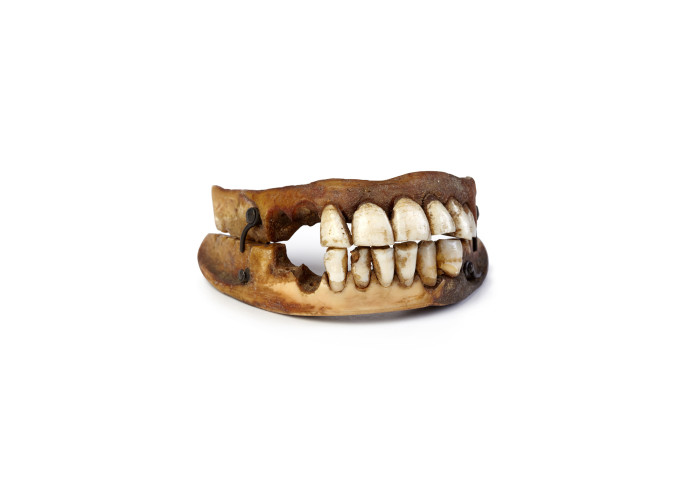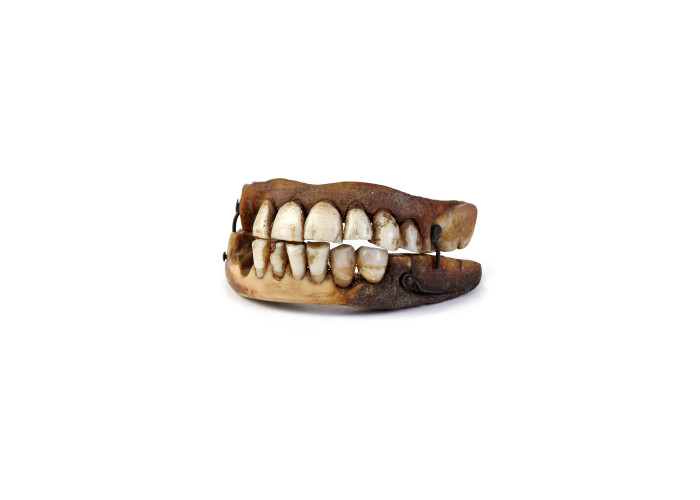“Waterloo Teeth”
Theme: Haitian revolution (1791 - 1804), Medicine, science and the people, Challenging slavery: abolition and opposition, French revolutionary and Napoleonic wars (1792-1815), Trade, tariffs and taxes

 Waterloo teeth, copyright Victoria Gallery & Museum, University of Liverpool. Photography Relic Imaging Ltd.
Waterloo teeth, copyright Victoria Gallery & Museum, University of Liverpool. Photography Relic Imaging Ltd.
 Waterloo teeth, copyright Victoria Gallery & Museum, University of Liverpool. Photography Relic Imaging Ltd.
Waterloo teeth, copyright Victoria Gallery & Museum, University of Liverpool. Photography Relic Imaging Ltd.
 Waterloo teeth, copyright Victoria Gallery & Museum, University of Liverpool. Photography Relic Imaging Ltd.
Waterloo teeth, copyright Victoria Gallery & Museum, University of Liverpool. Photography Relic Imaging Ltd.
 Waterloo teeth, copyright Victoria Gallery & Museum, University of Liverpool. Photography Relic Imaging Ltd.
Waterloo teeth, copyright Victoria Gallery & Museum, University of Liverpool. Photography Relic Imaging Ltd.
This set of dentures is fitted with real human teeth, extracted from the mouths of dead soldiers.
By the early 1800s, the transatlantic slave trade had made sugar readily available and relatively affordable in Europe. The popularity of sweet treats, coupled with poor dental hygiene, meant rotten and missing teeth were common.
After a major battle scavengers would scour the field with pliers, ready to loot the mouths of dead soldiers.
False teeth could be carved from hippopotamus, walrus, or elephant ivory, but these looked less real and rotted more quickly than human teeth. Human corpses were the best source of replacement teeth. After a major battle, like the one at Waterloo in 1815, scavengers would scour the field with pliers, ready to loot the mouths of dead soldiers.
Complete sets of healthy human teeth were very valuable and the tooth robbing business was lucrative. Dentists boastfully advertised dentures like these as ‘Waterloo teeth’ or ‘Waterloo ivory’. These were guaranteed to have come from young, healthy soldiers, killed in the prime of life, rather than from executed criminals or older corpses typically dug up by grave robbers.
This set came from the battlefields of the American Civil War (1860-65), shipped across the Atlantic to fill the mouths of toothless Europeans.
Did you know..?
The human teeth in this set of dentures would have been worth more than the ivory base on which they are mounted.
Sources & acknowledgements
This object description and its related educational resources were researched and written by our team of historians and education specialists. For further information see the item’s home museum, gallery or archive, listed above.
- Related resources
- Enquiry Questions
-
Did you know..?
The human teeth in this set of dentures would have been worth more than the ivory base on which they are mounted.
-
Education overview
You can access a range of teachers resources related to this object and more on our education page.
Please also see our glossary of terms for more detailed explanations of the terms used.
-
Curatorial info
- Originating Museum: Victoria Gallery & Museum, University of Liverpool
-
Use this image
You can download this image for personal and educational use but please take note of the license type and rights holder information.
- Rights Holder: Victoria Gallery & Museum, University of Liverpool. Photography Relic Imaging Ltd.
- License Type:
Find it here
This object is in the collection of Victoria Gallery and Museum










